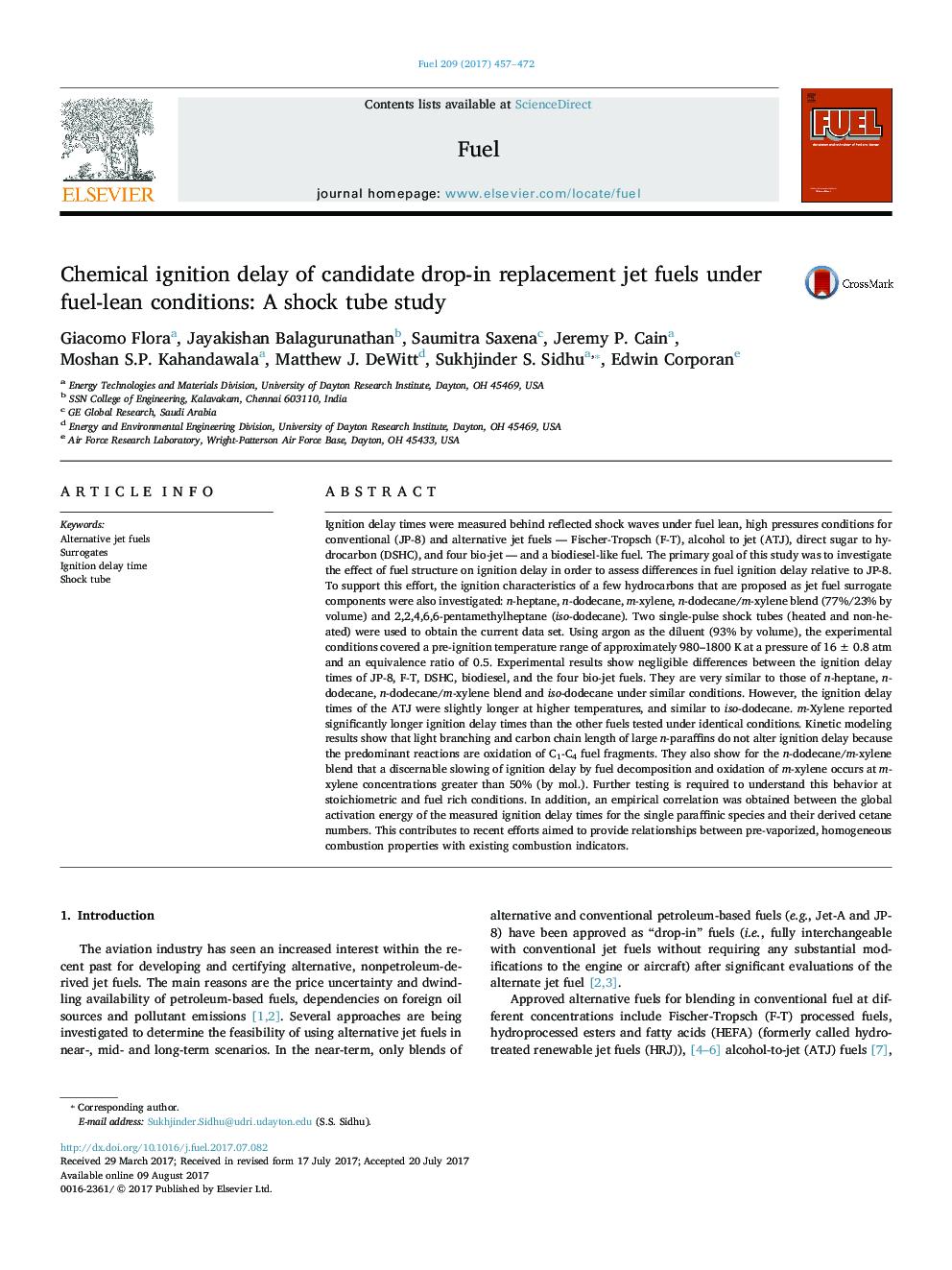| کد مقاله | کد نشریه | سال انتشار | مقاله انگلیسی | نسخه تمام متن |
|---|---|---|---|---|
| 6473940 | 1424955 | 2017 | 16 صفحه PDF | دانلود رایگان |
- High temperature, fuel lean ignition delay time measurements for fully formulated alternative fuels.
- Similar ignition delay times under the investigated pre-ignition conditions.
- Investigation of fuel structure effect on ignition delay times using fuel surrogate compounds.
- Controlling role of normal paraffins in the pre-ignition chemistry.
- High temperature homogeneous ignition delay time correlation with derived cetane number.
Ignition delay times were measured behind reflected shock waves under fuel lean, high pressures conditions for conventional (JP-8) and alternative jet fuels - Fischer-Tropsch (F-T), alcohol to jet (ATJ), direct sugar to hydrocarbon (DSHC), and four bio-jet - and a biodiesel-like fuel. The primary goal of this study was to investigate the effect of fuel structure on ignition delay in order to assess differences in fuel ignition delay relative to JP-8. To support this effort, the ignition characteristics of a few hydrocarbons that are proposed as jet fuel surrogate components were also investigated: n-heptane, n-dodecane, m-xylene, n-dodecane/m-xylene blend (77%/23% by volume) and 2,2,4,6,6-pentamethylheptane (iso-dodecane). Two single-pulse shock tubes (heated and non-heated) were used to obtain the current data set. Using argon as the diluent (93% by volume), the experimental conditions covered a pre-ignition temperature range of approximately 980-1800 K at a pressure of 16 ± 0.8 atm and an equivalence ratio of 0.5. Experimental results show negligible differences between the ignition delay times of JP-8, F-T, DSHC, biodiesel, and the four bio-jet fuels. They are very similar to those of n-heptane, n-dodecane, n-dodecane/m-xylene blend and iso-dodecane under similar conditions. However, the ignition delay times of the ATJ were slightly longer at higher temperatures, and similar to iso-dodecane. m-Xylene reported significantly longer ignition delay times than the other fuels tested under identical conditions. Kinetic modeling results show that light branching and carbon chain length of large n-paraffins do not alter ignition delay because the predominant reactions are oxidation of C1-C4 fuel fragments. They also show for the n-dodecane/m-xylene blend that a discernable slowing of ignition delay by fuel decomposition and oxidation of m-xylene occurs at m-xylene concentrations greater than 50% (by mol.). Further testing is required to understand this behavior at stoichiometric and fuel rich conditions. In addition, an empirical correlation was obtained between the global activation energy of the measured ignition delay times for the single paraffinic species and their derived cetane numbers. This contributes to recent efforts aimed to provide relationships between pre-vaporized, homogeneous combustion properties with existing combustion indicators.
Journal: Fuel - Volume 209, 1 December 2017, Pages 457-472
